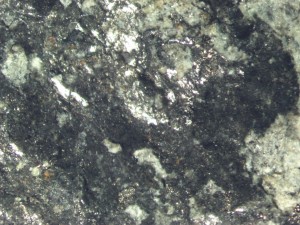From impact factors to impact craters
This was originally posted at: http://blogs.egu.eu/palaeoblog/?p=542
Day 2 in the Big Brother house (aka the European Geosciences Union General Meeting). There’s no where near enough beer, and tensions are getting high. A horde of angry horses have invaded the lower levels, and taken the President of Austria hostage, with demands of lowering the Fair Straw Tax.
But throughout all the acid-fuelled hysteria, two events have stuck out so far today. The first was a workshop discussion on open access publishing for early career researchers (ECRs), hosted by a new Editor for the EGU’s publishing house, Copernicus. Unfortunately, this event confirmed a lot of the current issues with the development of open access policies globally, in that there has been a serious communications breakdown about the effects the policy transitions, particularly in the UK now that Research Councils UK’s (RCUK) open access policy has come into play (April 1st), will have on how and where ECRs can publish. Here are comments on several of the more prevalent points raised:
The misconception that Gold-route open access publishing requires you to pay, up front, an Article Processing Charge (APC). Gold open access is immediate open access publishing, under an appropriate license (CC-BY, according to the RCUK) – of all global open access journals, the APC median and mode is zero. The commercial publishers, who don’t have institutional backing, and largely out-dated models of publication, still charge exorbitant prices (up to $5000 in cases), as they are established names, with a track record of successful publishing. They also happen to operate many of the middle-tier ranked journals, based on impact factors (a journal-based metric that measures the average citations of the journal’s articles over two years), which makes them attractive to scientists in terms of where to publish.
This is a prominent issue at the moment within academia. How do you avoid falling into the trap that journal title and impact factor mean anything about the quality of your research, and at the same time reach the audience who you want to (i.e., those in your field who read those journals). My response to this is that if you can’t reach the people who you want without having to submit to a particular journal, you’re not trying hard enough and under-estimate alternative non-subject specific methods of dissemination. Conferences and direct emails are a great way of distributing your research to the right audiences, as well as hosting them on your department or research group or personal website. RSS feeds of non-subject specific journals make discoverability a piece of cake nowadays. Using a combination of these methods, I don’t see any reason why your research can’t hit your intended audience.
With respect to impact factor as a mode of quality assessment on an individual basis, I’m just gonna leave this here: http://occamstypewriter.org/scurry/2012/08/13/sick-of-impact-factors/. Along with this, it means that there’s no longer any excuse to conform to relevant policies and publish open access. Dissemination of research has never been easier in this digital age, and we have to kick the impact factor habit (RCUK has explicitly stated that IF won’t be used as an assessment metric). Alternatives such as ImpactStory and AltMetric are tools that are a step on the right path towards diving ‘true impact’ of research by providing more details about how the research has been picked up and distributed.
Other things to consider with respect to cost are models like PeerJ, a new initiative where you can have a personal and unlimited publishing account, with open peer review, for $299; BioMed Central, PLoS and others offer fee waivers for anyone who can’t afford APCs (PLoS have never rejected a fee waiver, to my knowledge); developing countries have special circumstances recognised by many publishers that make research freely available to them anyway (see PNAS and Nature Publishing Group), and, er, a lot more stuff that I can go into more detail after the ‘Demystifying Open Access’ session on Thursday evening here, which I’ll be part of as an ECR with knowledge of open access (caveat: I’ve never been published in a peer-reviewed journal, yet).
So yeah, lots of discussion about open access that indicates, to me, that people who are OA advocates, who work on the policy front-line, and those who are generally involved in the discussion must work harder to communicate the changes and issues with those who the policy changes will have the greatest impact on. So on from impacts of publishing to impacts of an entirely new kind!
In case you’ve been living in a hole for the last few weeks, a 10,000 tonne, 17m wide meteor slammed into Russia on February 15th, injuring more than 1000 people, and making a pretty loud bang, and spanking the Earth with the power of nearly 1000 Hiroshima bombs (about 400 kila-tonnes). On the same day, another meteor struck completely unrelated to this one at Chelyabinsk, but the difference being that it wasn’t a surprise, caught on a video of the dashboard of some lucky driver, but had been monitored for over a year, giving somewhat more of a warning than a few seconds.

Known as the ‘Russian Fireball’, which also happens to have been Lenin’s bedroom name, the geochemistry of this extra-terrestrial rock star has began to be unravelled. Analysis of albite (one end-member mineral of plagioclase feldspar, which has a sodium-calcium solid solution) reveals to us the age and formation of the rock, as well as the impact history and secondary processes that occurred within the asteroid. Pretty neat eh, I guess chemistry does have it’s uses. Slightly cooler though, is what the science team had been doing to develop their understanding of how impact craters develop, by creating experimental impact craters in the lab and comparing the crater morphology to learn about speed, angle of impact, density, effect of substrate, and how to make large holes in your boss’ wall.

An International Monitoring System acquires data about sound activity from around the Earth. Although not explicitly geared towards detecting atmosphere-penetrating projectiles, the system does detect anomalous sound sources, such as from accidental explosions (*glances at North Korea*), meteorite entries, volcanic eruptions, earthquakes, severe storms, and the coming of Cthulhu. On this occasion, the impact was heard from more than 20 infrasound monitoring stations from around the globe; not particularly useful as a warning system, but still pretty cool. These stations can also be used to estimate the energy release from impacts.

To finish, and a rather controversial point, when asked if we needed to invest more in developing early-warning and detection systems for near-Earth objects, one of the panellists, Alexander Deutsch (University of Munster, Germany), remarked that we don’t, as we already have sufficient data to monitor all dangerously-sized projectiles. Apart from the Russian Fireball, apparently. Do we need to invest more in a global monitoring system?

Since we don’t have a reasonable chance of doing anything about an incoming impactor in any realistic timescale (up to decades away), is there any real point to knowing the date of our deaths (in the pessimistic case)?